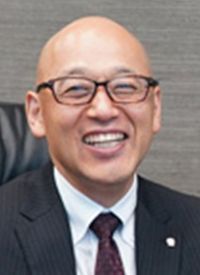News
Article
Japan Approves Second-line Axi-cel for LBCL
Author(s):
Japan’s Ministry of Health, Labor and Welfare has approved axicabtagene ciloleucel for the initial treatment of patients with relapsed/refractory large B-cell lymphoma, including diffuse large B-cell lymphoma, primary mediastinal large B-cell lymphoma, transformed follicular lymphoma, and high-grade B-cell lymphoma.
Wataru Takasaki, PhD

Japan’s Ministry of Health, Labor and Welfare (MHLW) has approved axicabtagene ciloleucel (axi-cel; Yescarta) for the initial treatment of patients with relapsed/refractory large B-cell lymphoma (LBCL), including diffuse large B-cell lymphoma (DLBCL), primary mediastinal large B-cell lymphoma, transformed follicular lymphoma, and high-grade B-cell lymphoma (HGBL).1
The approval was supported by data from the pivotal phase 3 ZUMA-7 trial (NCT03391466), which showed that at a median follow-up of 2 years, axi-cel induced a significant improvement in event-free survival (EFS) vs standard of care (SOC; HR, 0.40; 95% CI, 0.31-0.51; P <.001). The median EFS was 8.3 months (95% CI, 4.5-15.8) in the axi-cel arm vs 2.0 months (95% CI, 1.6-2.8) in the SOC arm. The 2-year EFS rate was 41% (95% CI, 33%-48%) with axi-cel vs 16% (95% CI, 11%-22%) with SOC.1,2
“We are glad to have achieved this important milestone in order to provide an innovative treatment option to more patients with LBCL in Japan,” Wataru Takasaki, PhD, executive officer, head of R&D Division in Japan, Daiichi Sankyo, stated in a press release. “It also further demonstrates the expertise of our Daiichi Sankyo R&D organization as we had successfully expanded the indication for this CAR-T modality.”
In April 2022, the FDA approved axi-cel for the treatment of adult patients with LBCL that is refractory to first-line chemoimmunotherapy or relapses within 12 months of first-line chemoimmunotherapy.3 In October 2022, the European Commission approved axi-cel for the treatment of adult patients with DLBCL or HGBL who relapse within 12 months from completion of, or are refractory to, first-line chemoimmunotherapy.4 Both approvals were based on findings from ZUMA-7.
The ongoing, randomized, open-label, global, multicenter ZUMA-7 study is evaluating the safety and efficacy of a single infusion of axi-cel vs SOC in patients with relapsed/refractory LBCL within 12 months of first-line therapy. Patients in the control arm were assigned platinum-based salvage chemotherapy followed by high-dose chemotherapy and autologous stem cell transplant (HDT-ASCT) for those who respond to salvage chemotherapy.
Patients are required to be at least 18 years of age with LBCL that was relapsed or refractory within 1 year of frontline treatment and have intention to proceed to consolidation HDT-ASCT.
Enrolled patients were randomly assigned 1:1 to receive either a single infusion of axi-cel or SOC. EFS is the primary end point. Key secondary end points include objective response rate, overall survival, patient-reported outcomes (PROs), and safety.
Additional data from the study showed that axi-cel led to an improvement in EFS across key patient subgroups, including elderly patients (HR, 0.28; 95% CI, 0.16-0.46), primary refractory patients (HR, 0.43; 95% CI, 0.32-0.57), those with HGBL (HR, 0.28; 95% CI, 0.14-0.59), and those with double-expressor lymphoma (HR, 0.42; 95% CI, 0.27-0.67).
Investigators found that the toxicity profile of axi-cel was consistent with prior studies. Among the 170 patients in the experimental arm evaluable for safety, 6% experienced grade 3 or higher cytokine release syndrome (CRS) and 21% experienced neurologic events. There were no grade 5 CRS or neurologic events reported.
In the analysis of PROs, patients assigned to axi-cel (n = 165) enjoyed statistically significant improvements in quality of life (QOL) at day 100 compared with those given SOC (n = 131), using a prespecified analysis for three PRO-domains (EORTC QLQ-C30 Physical Functioning, EORTC QLQ-C30 Global Health Status/QOL, and EQ-5D-5L visual analog scale). There was also a trend toward faster recovery to baseline QOL with axi-cel vs SOC.
“We are very proud of this additional [axi-cel] approval in Japan,” Christi Shaw, chief executive officer of Kite, said. “As Japan has the second-largest number of people diagnosed with non-Hodgkin lymphoma globally, this approval marks an important step in bringing this innovative therapy earlier to more patients.”
References
- Yescarta® now approved in Japan for initial treatment of relapsed/refractory large B-cell lymphoma. News release. Kite. December 22, 2022. Accessed December 23, 2022. https://bit.ly/3FQTQMt
- Locke FL, Miklos DB, Jacobson CA, et al. Axicabtagene ciloleucel as second-line therapy for large B-cell lymphoma. N Engl J Med. 2022;386(7):640-654. doi:10.1056/NEJMoa2116133
- FDA approves axicabtagene ciloleucel for second-line treatment of large B-cell lymphoma. News release. FDA. April 1, 2022. Accessed October 18, 2022. https://bit.ly/3iSQ8XT
- Kite’s Yescarta first CAR T-cell therapy to receive European marketing authorization for use in second-line diffuse large B-cell lymphoma and high-grade B-cell lymphoma. News release. Kite. October 17, 2022. Accessed October 18, 2022. https://bit.ly/3EMTI1O









